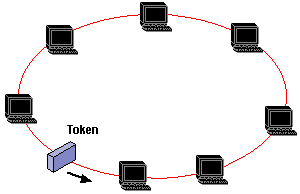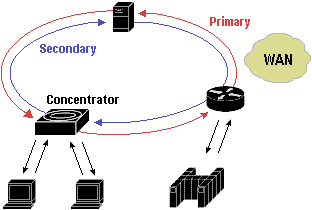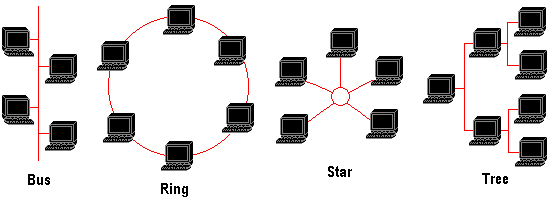In a Peer-to-peer networking architecture each computer (workstation) has equivalent capabilities and responsibilities. There is no server, and computers simply connect with each other in a workgroup to share files, printers, and Internet access. … [Read more...]
Gigabit Ethernet
The next step in Ethernet's evolution was driven by the Gigabit Ethernet Alliance, formed in 1996. The ratification of associated Gigabit Ethernet standards was completed in the summer of 1999, specifying a physical layer that uses a mixture of proven technologies from the original Ethernet … [Read more...]
Fast Ethernet
Fast Ethernet was officially adopted in the summer of 1995, two years after a group of leading network companies had formed the Fast Ethernet Alliance to develop the standard. Operating at ten times the speed of regular 10Base-T Ethernet, Fast … [Read more...]
Ethernet
Ethernet was developed in the mid 1970s by the Xerox Corporation, and in 1979 Digital Equipment Corporation DEC) and Intel joined forces with Xerox to standardize the system. The first specification by the three companies called the Ethernet Blue Book was released in 1980, it was also known as the … [Read more...]
Token Ring Networks
In 1984, IBM introduced the 4 Mbit/s Token Ring network. Instead of the normal plug and socket arrangement of male and female gendered connectors, the IBM data connector (IDC) was a sort of hermaphrodite, designed to mate with itself. Although … [Read more...]
FDDI Networking
Developed by the American National Standards Institute (ANSI) standards committee in the mid-1980s - at a time when high-speed engineering workstations were beginning to tax the bandwidth of existing LANs based on Ethernet and Token Ring - the … [Read more...]
Network Topologies
LAN topologies define the manner in which network devices are organized. Four common LAN topologies exist: A bus topology is a linear LAN architecture in which transmissions from network stations propagate the length of the medium and are … [Read more...]
OSI Model
The Open Systems Interconnection (OSI) reference model describes how information from a software application in one computer moves through a network medium to a software application in another computer. The OSI reference model is a conceptual … [Read more...]



